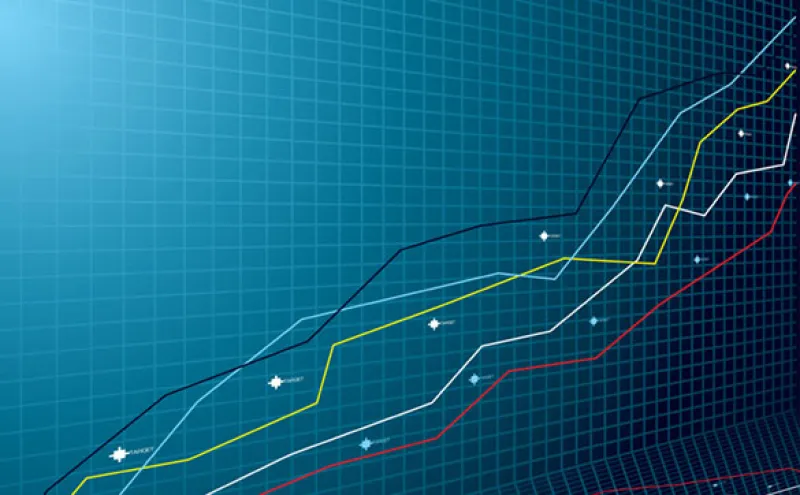November was brutal on almost all hedge fund styles, with managed futures and equity sector funds leading the way. Investors can blame new Covid-19 variants and inflation fears for the worst month for hedge funds since March 2020. PivotalPath’s composite index lost 1.7 percent for the month, while the research and data firm’s managed futures index was down more than 2 percent in November. PivotalPath tracks 2,400 institutional hedge funds, representing $2.4 trillion in assets.
Managed futures — commodity trading advisers — suffered when investors ran for safety. “The markets have been up in the 20s generally,” said Jon Caplis, CEO. “You have energy and commodities, which have rallied all year. Both growth and value have been making money. Everything was working and people were comfortable taking risk. Then that reversed. So if you are a trend follower, which most CTAs are in some way, you were probably on the wrong side of that trade.” Managed futures are still up more than 8 percent for the year.
It was a more nuanced story for equity sector strategies. Healthcare funds were dragged down by losses in biotech, while financials were hurt as the 10-year Treasury rallied.
The performance of TMT — tech, media and telecom — funds, however, can’t be explained simply by looking at technology overall. The Nasdaq, for example, eked out a small gain of 25 basis points. In contrast, hedge funds took very specific and active bets. “That’s not the story at all. The exposure and correlation of TMT managers to the Nasdaq has been coming down for a while,” said Caplis. In November, the funds were hurt by the performance of certain sectors in tech, such as mobile payments and SAAS companies. Both baskets were down almost 12 percent last month. PivotalPath’s TMT index was down 2.8 percent.
A lot of hedge funds have been heavily invested in mobile payments and SAAS, and they’ve done well this year. But the performance has been fairly volatile. For example, mobile payments over the last two years has had an annualized return of 39 percent, but with volatility of 33 percent. “These are sectors with wild volatility but relatively good Sharpe ratios and unbelievable performance,” Caplis said. “Because of the dispersion that can happen within tech, you have to understand as an investor where a fund has its edge and whether it is sticking to that.”
The performance of PivotalPath’s Social Distance Winners Basket — which includes stocks like Peloton and Zoom that benefited from a virtual world — and its Social Distance Losers Basket — companies that were hurt by Covid-19, such as those in leisure and hospitality — also told a distinct story last month. Both baskets fell dramatically.
There were bigger issues at play than whether businesses were going to open or not. “At the end of November, everyone threw their hands up at the same time and said we are going to take risk off the table. We’re selling and we’re buying safety,” Caplis said.
Even with the losses in November, however, PivotalPath’s composite index was up 6.7 percent for the year. In fact, over the last 12 months, all of PivotalPath’s hedge fund indices, except a number of equity sector strategies, produced excess returns, or alpha, compared to the S&P 500. The industry has been rewarded for the performance. Assets in hedge funds reached more than $4.66 trillion by October, after eight straight months of net inflows, according to BarclayHedge.
Equity quant funds were among the best performers in 2021, returning 12.6 percent year-to-date. After a terrible 2020, and disappointing performance over 3- and 5-year periods prior to 2021, equity quant strategies have rebounded.
Credit funds also performed well in 2021, returning 10 percent year-to-date. Distressed funds were the best performer — up 15.1 percent through November, which is likely a surprise to managers and investors, said Caplis. There was only a short window in 2020 for distressed investors to put money to work before central banks and governments stepped in to stabilize the economy. Nonetheless, for managers that scooped up assets at big discounts, valuations quickly steadied. “This year is probably not repeatable,” he stressed. Multi-strategy credit funds also turned in good numbers, returning 12.5 percent year-to-date. The structured credit and mortgage-backed securities index returned 11 percent so far in 2021, after being flat last year. The category was crushed by the pandemic in early 2020, losing about 30 percent at the low.
One of the biggest hedge fund stories of the year was multi-strategy funds, which were up 8.5 percent year-to-date. On a risk-adjusted basis, these funds, which invest across fixed income, equity, quant and fundamental, did even better. The average multi-strategy fund tracked by PivotalPath had a Sharpe ratio of 1.85. That means the funds are running almost neutral to the S&P 500, providing investors with significant protection.
“Almost all of the returns are alpha, with the average drawdown in an unbelievably difficult environment being 2.3 percent,” said Caplis. “What has even surprised me as well as people I talk to that are in these shops is how good they’ve been this year and last in moving to what is working. You hear rumors that something big is going to happen in multi-strat, and it just doesn’t. They know how to manage this risk and allocate and shift capital.”
2021 was also good for smaller hedge funds, which were significantly beating their larger peers for most of the year. In November, everybody got hit by rising correlations and volatility, and size didn’t matter. However, funds with less than $250 million in assets returned almost 11.5 percent through October. At the same time, funds with between $250 and $500 million returned about 8 percent, more than 3 percentage points less. Hedge funds on the upper size end — those with more than $5 billion — generated 5.99 percent through October, according to PivotalPath.







